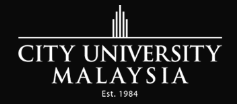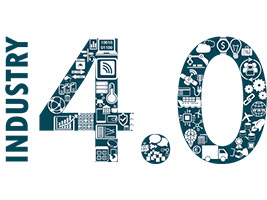Malaysia’s future lies in digitalising its education sector
by StudyMalaysia.com on January 3, 2020 | Top Stories

As the World Bank emphasised in a report last year, the digital economy plays a vital role in Malaysia’s journey towards becoming a high-income nation, so unlocking its potential is key for progress. Notably, one of the World Bank’s suggested reforms to help on this journey was “Improving human capital through better curriculum and learning opportunities, while engaging more vibrant private sector financing.”
This is the crux of the matter when it comes to improving Malaysia’s fortunes and the prospects of its young people. While Malaysia still ranks below the OECD average in math, reading, and science, investments in high-quality education can reduce skill mismatches, raise wages, and help all Malaysians harness the potential of new technologies. The country’s educators want to improve the quality of teaching – including incorporating more math and science into the curricula at all levels – while languages and traditional humanities subjects will complement the technical skills to enable success in the future.
This sense of balance is the key to success and what the education roadmap of the future really looks like. First though, there remains a need to tackle a shortage of teachers – just a year ago education minister Dr Maszlee Malik was urging teachers not to quit their allotted posts to move closer to their hometowns and deputy education minister Teo Nie Ching was expressing concern over a shortage of teachers in major cities and a lack of quality English teachers.
This is something that has the potential to damage not just education, but the wider economy and communities too. But investment can help solve this, and this is clearly acknowledged at the highest levels of government. In April, Prime Minister Tun Dr Mahathir told graduating students at the Asia School of Business in Kuala Lumpur: “As a nation, no investment will pay as high a dividend as the investment in education. Education raises the potential of the individual, which in turn, raises the potential of businesses and economies to perform well.”
Investment in technology is especially important for raising educational standards, as The Malaysia Education Blueprint, which began rolling out in 2013, strongly emphasises. The government has further demonstrated its willingness to digitise education so that it becomes accessible to all students through facilitating initiatives such as the 1BestariNet project, the MOOCs project Open Learning, and The FrogAsia project.
With the technology in place the question becomes how can it liberate and facilitate the range of techniques that best deliver educational outcomes? Online or e-learning, is arguably the most important of these new approaches. It carries many benefits, not least its flexibility – sometimes it is the only educational solution that can be fitted around professional life. Meanwhile, in schools, online learning can be life-changing when a student wishes to study a subject not covered by the school, giving them the freedom to follow their passion. Learning through virtual classrooms with an online teacher can also provide cover for the aforementioned schoolteacher shortages.
Complementing online learning is blended learning, which refers to the integration of face-to-face and technology-mediated instructional approaches, which typically provides students with some element of control over time, place, and pace of learning. Digital products are now available that provide entire courses online, broken down into pre-prepared lessons, assessment materials and student activity monitoring tools, considerably reducing time spent by teachers on course preparation, marking and reporting. Blended learning is also an important element of the Malaysia Education Blueprint. By integrating online learning with face-to-face teaching, the plan is that 70% of higher education programmes will use blended learning over the period of the blueprint.
The recently released HP New Asian Learning Experience Study found that parents, so often the gatekeepers of a child’s education, are also supportive of enhancing their children’s education with technological innovation, including blended learning, since it helps equip them with skills for the future. The study found that parents believe their children can benefit from a mixture of both printed and digital materials, seeing print as a more effective medium for reading comprehension and vocabulary knowledge while digital platforms aid both creative and critical thinking.
This optimistic outlook about the future of Malaysia and the role technology can play is also echoed in the latest Bloomberg New Economy Forum survey, which covered 100 Malaysia-based business professionals. The survey found that 76% of the respondents in the country agree or strongly agree that lifelong learning will be able to mitigate the threat that AI poses to manual jobs, significantly higher than the global average of 64%. The country’s future is bright, and it starts with the intelligent integration of technology in schools to support both students and teachers.
The views and content expressed are solely from John Ingram, CEO of Pamoja Education.
Related Articles:
You May Also Be Interested In...
So you wanna be a lawyer
![So you wanna be a lawyer - StudyMalaysia.com]() Did you know that LLB is the Latin abbreviation for ‘Legum Baccalaur...
Did you know that LLB is the Latin abbreviation for ‘Legum Baccalaur...How To Apply For A Scholarship
![How To Apply For A Scholarship - StudyMalaysia.com]() Have you ever thought about applying for a scholarship? If you have bu...
Have you ever thought about applying for a scholarship? If you have bu...IPTS allowed to operate, online learning to continue
![IPTS allowed to operate, online learning to continue - StudyMalaysia.com]() On 1 May 2020, the government announced that business activities in mo...
On 1 May 2020, the government announced that business activities in mo...APU redesigns curriculum to future-proof business graduates
![APU redesigns curriculum to future-proof business graduates - StudyMalaysia.com]() Asia Pacific University of Technology & Innovation (APU) has recen...
Asia Pacific University of Technology & Innovation (APU) has recen...Public university academic session 2020 / 21 to start mid-October 2020
![Public university academic session 2020 / 21 to start mid-October 2020 - StudyMalaysia.com]() Following the extension of the Movement Control Order (MCOP) until 12 ...
Following the extension of the Movement Control Order (MCOP) until 12 ...�10 INVESTIGATIVE careers you could consider
![�10 INVESTIGATIVE careers you could consider - StudyMalaysia.com]() Have you ever wondered why your career counsellor makes you answer que...
Have you ever wondered why your career counsellor makes you answer que...






























